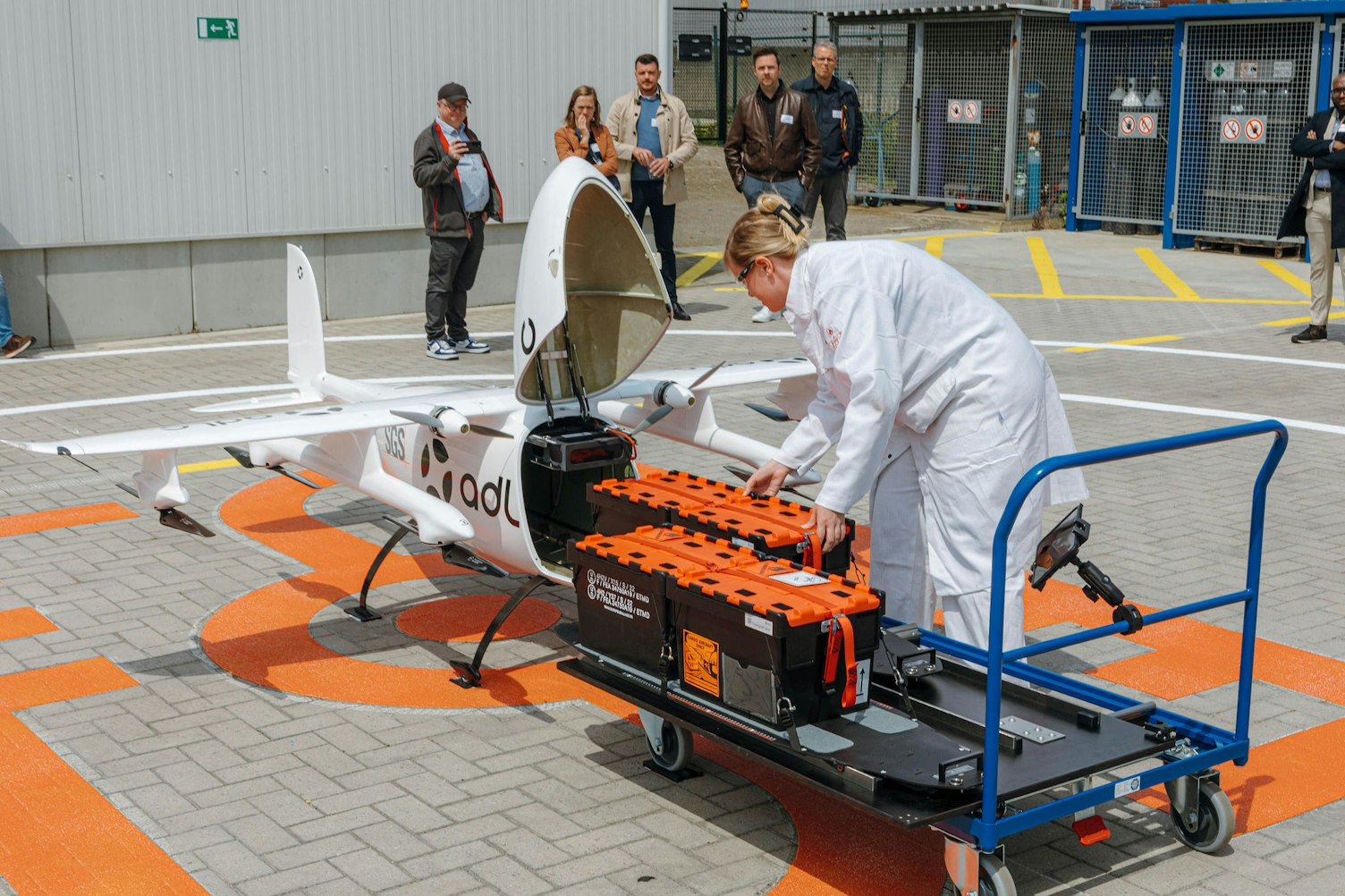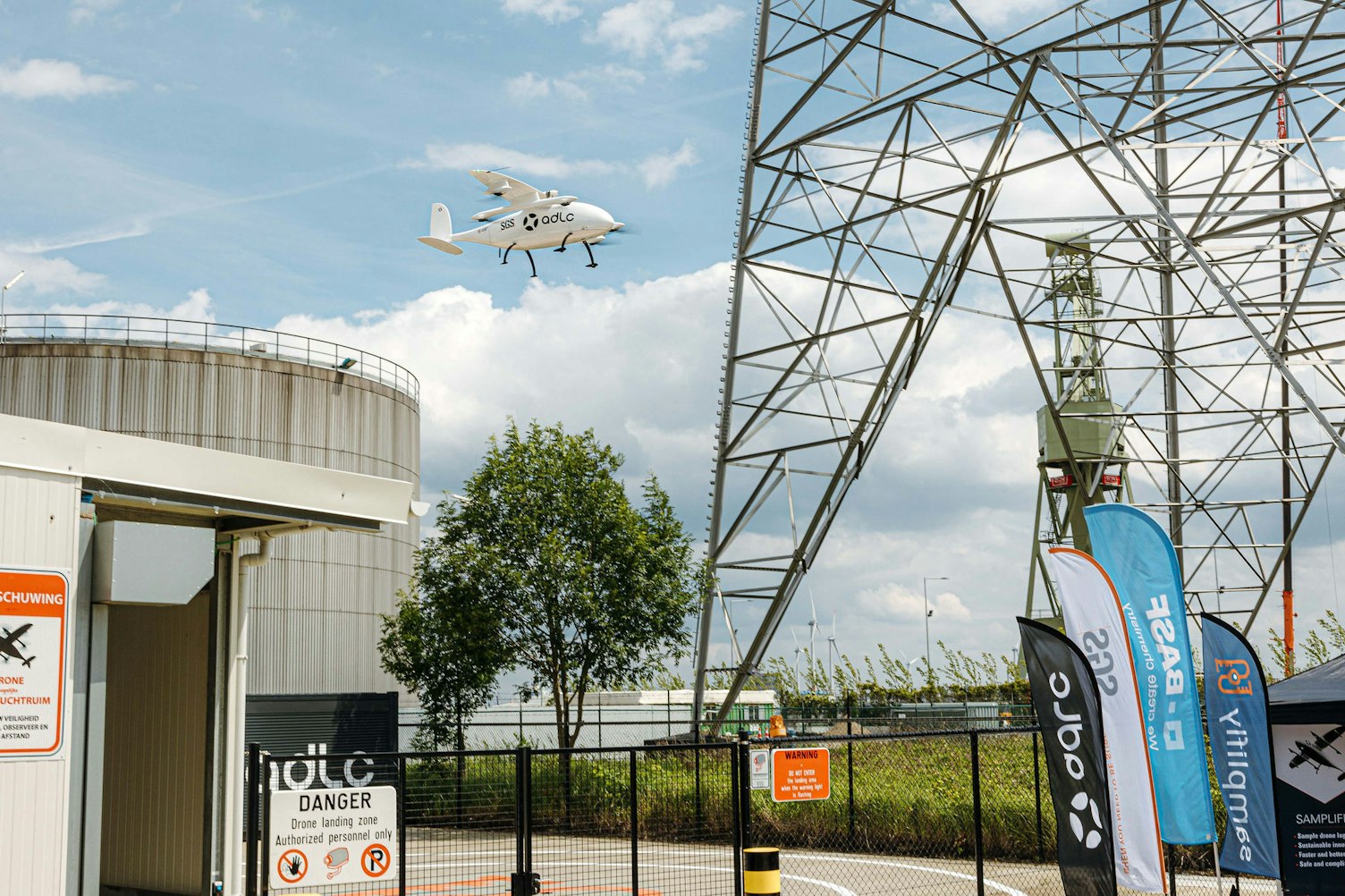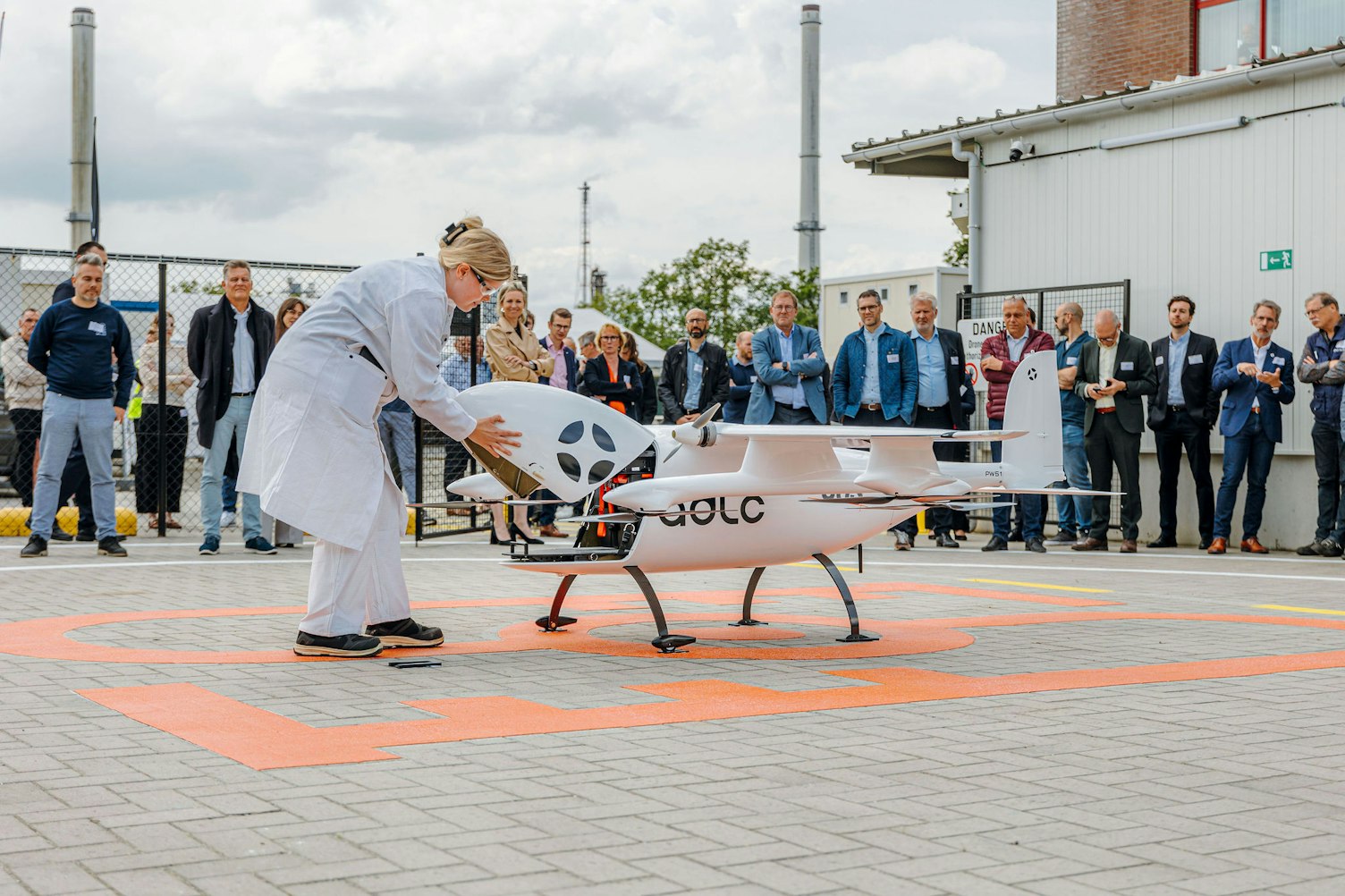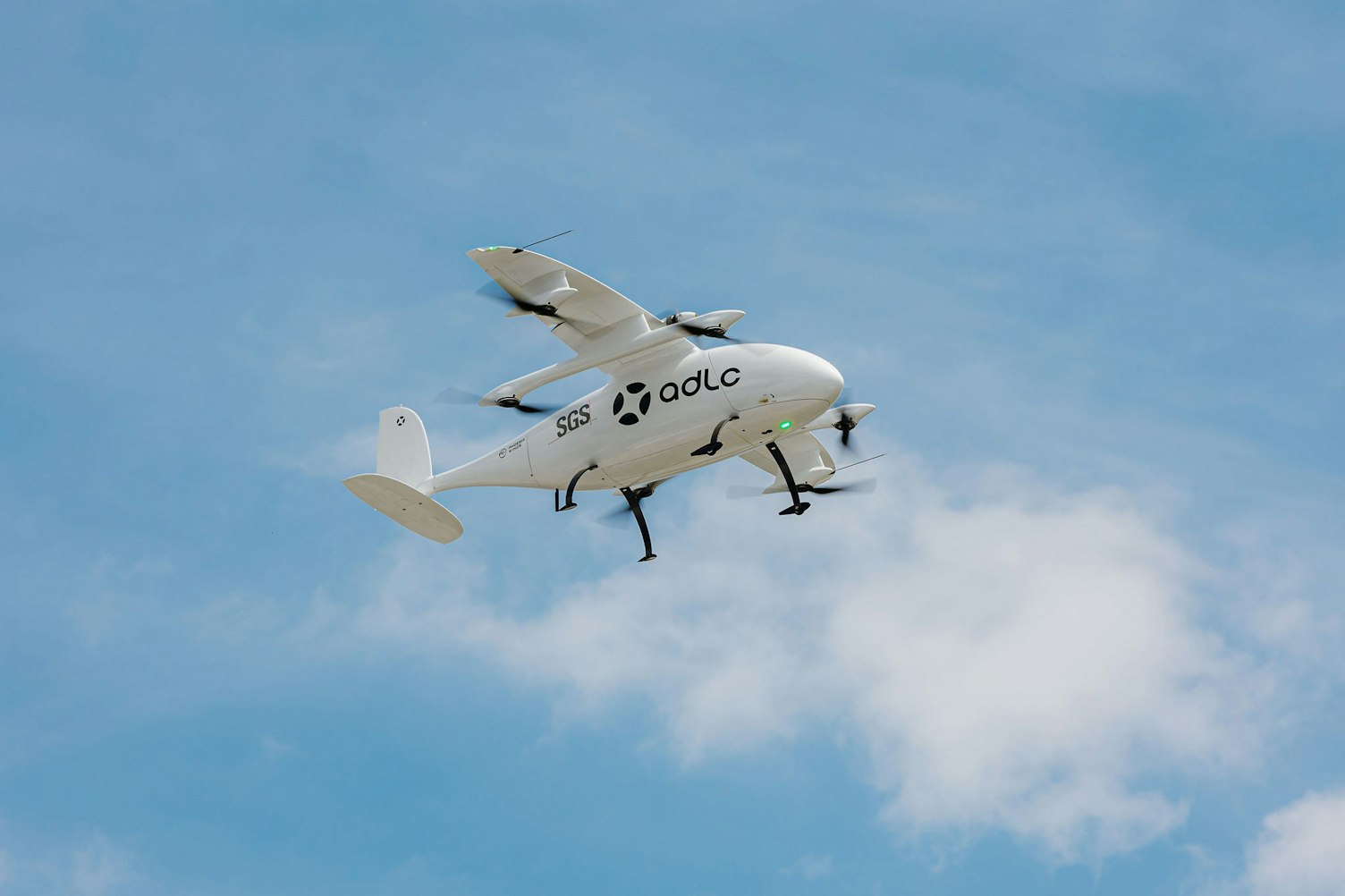SAMPLIFLY: Ready for take-off
On June 13, 2024, we held an interactive demonstration event, to showcase this innovative service to our customers, politicians and the media. This marks a significant milestone in our journey – the successful completion of our proof of concept.
We are proud to share this success story and to launch this exciting service. Watch our video to discover the service and experience the excitement from the day.
Context
Today, wet cargo ships arriving in port need to verify their cargo’s composition before unloading can begin. Once a ship has docked, an SGS inspector gathers several samples of its cargo. Then, these samples are sent to an SGS laboratory where the analysis can be performed. Until now, all samples have been transported by road.


Objective
The objective of the SAMPLIFLY proof of concept was to demonstrate the technical, legal and commercial viability of drone-based transportation service for petrochemical samples in a port environment. An exciting innovation for this sector, that we have now successfully accomplished.
By using drones to transport samples for analysis, SGS intends to improve its operations and value proposition for the industry.
Adding value
The road transportation companies currently employed to transport samples use regular vans. Unavoidably, these companies face daily issues such as traffic congestion, bridge openings or natural barriers. This can significantly increase lead times and transport duration directly impacting SGS’s operations. Moreover, road transport contributes to high NOx and CO2 emissions within the port.
SGS’s use of drones will provide a transportation service that will be up to six times faster, more ecological by reducing CO2 emissions by up to 80% (full life cycle included) and more integrated with real-time information. Consequently, ships will be able to unload quicker than before, freeing up valuable dock-time.

Service architecture
- The process begins when an SGS inspector places an order for delivery on ADLC's web ordering interface. This user-friendly platform allows for easy order tracking
- At the time of pick-up, the drone will be available at the designated take-off location, where the inspector can load the drone
- Then, the drone flies automatically from the take-off location to the destination using its onboard computers and navigation systems. The drone will be remotely monitored by a pilot in a ground control system who is ready to take action in case of incident and ensure the safety of the flight. Throughout the operation, SGS is kept informed of the status of the order through the ADLC platform
- Finally, on completion of the flight, SGS’s laboratory technician unloads the samples and conducts the analysis
The main building blocks of the service include:
- Drone technologyReliable drones equipped with onboard computers and navigation systems that allow for automated flights (BVLOS)
- Operations control centerSoftware to manage and automate ADLC’s operations
- Ground control stationA system enabling remote monitoring of the drone during flight
- Ordering platformAn easy-to-use and convenient platform for placing and tracking orders
Strategic partnership
To run the SAMPLIFLY proof of concept, a strategic partnership has been established between ADLC, SGS and BASF. The unique combination of ADLC’s drone expertise, SGS’s testing and inspection expertise and BASF’s chemical expertise, enables us to address the SAMPLIFLY project’s complex technical and regulatory challenges.


Current status
Our groundbreaking proof of concept for the SAMPLIFLY service has been completed!
We have successfully flown from the BASF site to the SGS laboratory at Antwerp with dangerous petrochemical samples on board.
This marks a pioneering milestone as we are the first in Europe to achieve this feat and thus revolutionize sample transportation.
After more than two years of development and pioneering work, we are now ready to go. In the coming months, this sustainable and cutting-edge drone transport will be fully digitally integrated into our customer services. Our ambition is to scale this up to interested companies in the Port of Antwerp-Bruges (POAB) and beyond (other international ports).
Are you interested in this service? Contact us to discuss how we can work together.
